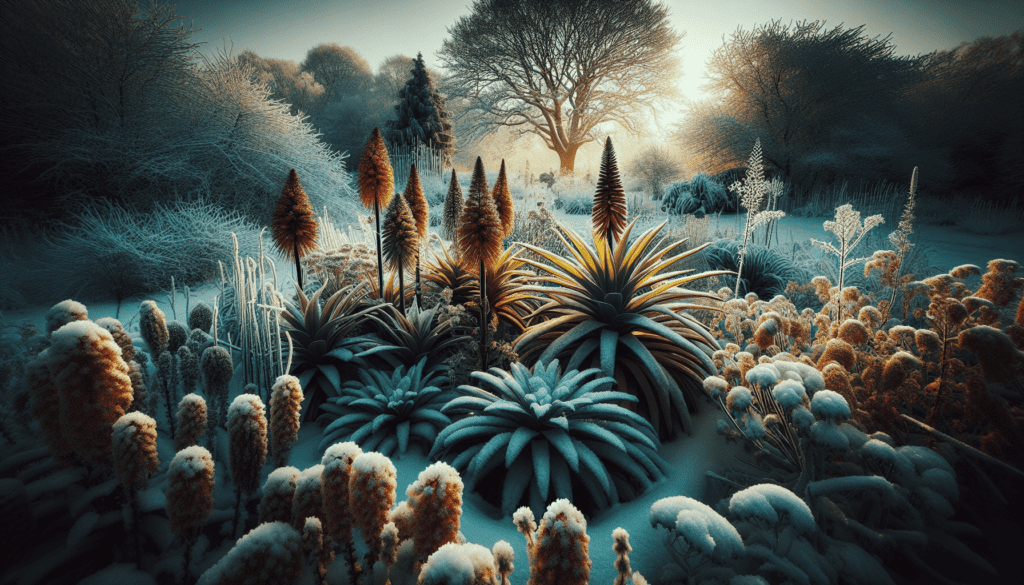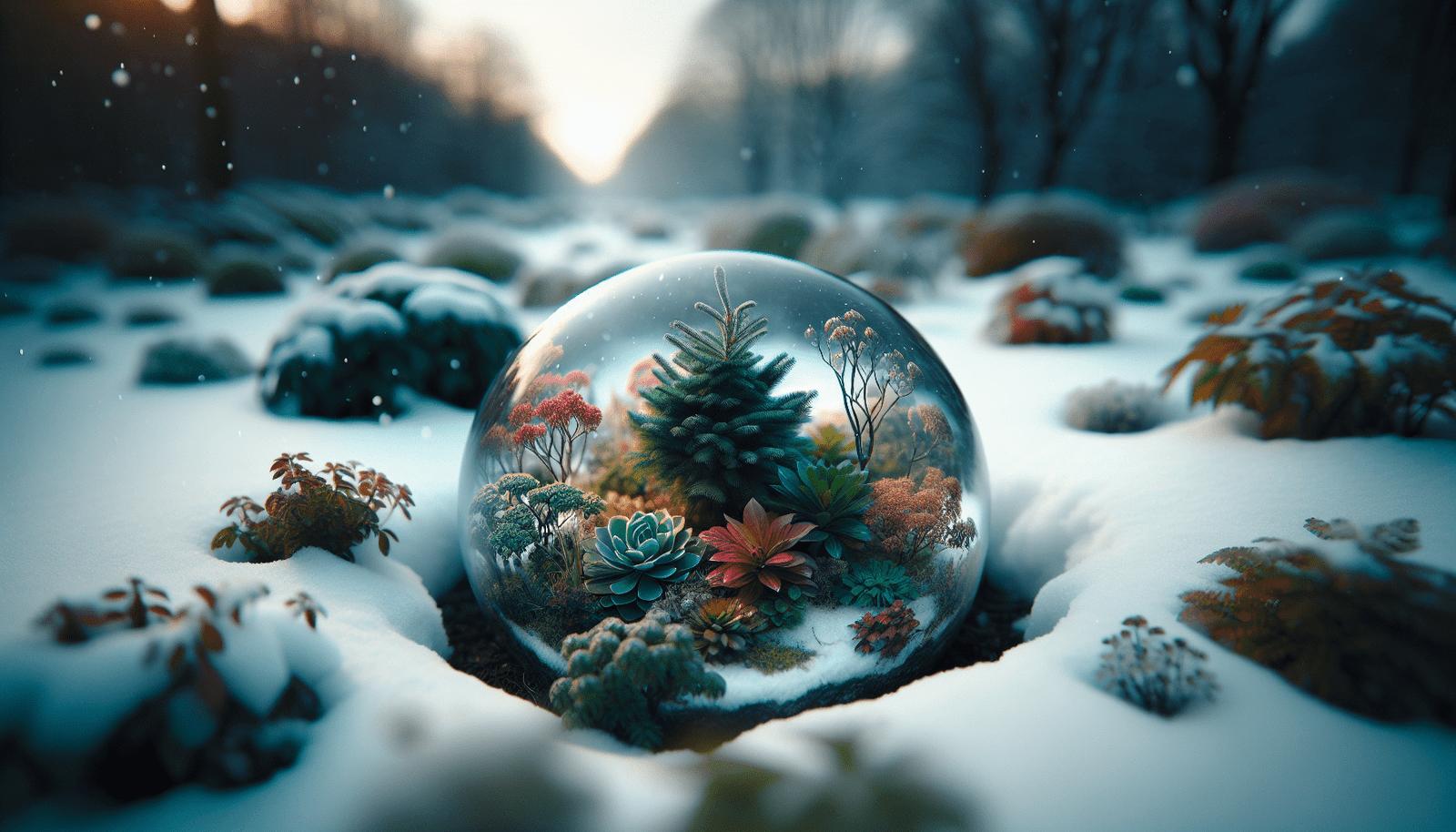Are you longing to have a vibrant and colorful garden even during the chilly winter months? Look no further! In this article, you will discover the best plants to adorn your winter garden with beauty and vibrance. From the striking Hellebores to the delicate Snowdrops, these plants will add a touch of magic to your outdoor space, defying the dreary winter landscape. Get ready to transform your garden into a winter wonderland that will captivate and delight all who see it.
Evergreen Plants
Pine (Pinus)
Spruce (Picea)
Holly (Ilex)
Boxwood (Buxus)
Juniper (Juniperus)
Having evergreen plants in your winter garden is a great way to add color and life to your outdoor space during the colder months. Evergreen plants retain their foliage throughout the year, providing a beautiful backdrop for other winter plants. One popular choice for an evergreen plant is the Pine, specifically the Pinus variety. Pines are known for their towering presence and needle-like leaves, which come in a variety of shades of green. Another excellent choice is the Spruce, which adds a touch of elegance with its slender branches and vibrant green needles. The Holly plant, or Ilex, is known for its glossy, deep green leaves and bright red berries, which are a classic symbol of the holiday season. Boxwood, or Buxus, is a versatile evergreen shrub that can be shaped into hedges, topiaries, or used as a standalone plant. Lastly, the Juniper, or Juniperus, is a hardy evergreen that comes in a variety of shapes and sizes, perfect for adding texture and interest to your winter garden.
Winter Flowers
Winter Jasmine (Jasminum nudiflorum)
Witch Hazel (Hamamelis)
Snowdrop (Galanthus)
Winter Aconite (Eranthus)
Camellia (Camellia japonica)
Nothing brings cheer to a winter garden quite like the sight of beautiful, blooming flowers. While many plants go dormant during the colder months, there are a few resilient blooms that can withstand the chilly temperatures. One such flower is the Winter Jasmine, or Jasminum nudiflorum, which boasts bright, yellow blossoms that can add a pop of color to any winter landscape. Another stunning winter flower is the Witch Hazel, or Hamamelis, which produces delicate, spidery blooms in shades of yellow, red, and orange. Snowdrops, or Galanthus, are small, white flowers that often poke through the snow, signaling the arrival of spring. Winter Aconite, or Eranthus, is another early bloomer that can add a burst of yellow to the winter garden. Lastly, the Camellia plant, or Camellia japonica, is a true showstopper with its large, vibrant flowers that come in a variety of colors, including red, pink, and white.

Berry-Bearing Plants
Winterberry (Ilex verticillata)
Firethorn (Pyracantha)
Highbush Cranberry (Viburnum trilobum)
Wintergreen (Gaultheria procumbens)
Beautyberry (Callicarpa americana)
If you’re looking to attract birds and wildlife to your winter garden, consider planting berry-bearing plants. Berries not only provide a valuable food source for birds during the winter months when other food is scarce, but they also add a vibrant splash of color to your garden. One popular choice is the Winterberry, or Ilex verticillata, which produces bright red berries that last throughout the winter. Firethorn, or Pyracantha, is another excellent choice, with its clusters of orange or red berries that hang on well into the winter. Highbush Cranberry, or Viburnum trilobum, produces clusters of bright red berries that resemble cranberries. Wintergreen, or Gaultheria procumbens, is a low-growing shrub that produces glossy red berries and has a unique, minty fragrance. Lastly, the Beautyberry, or Callicarpa americana, is known for its stunning purple berries that stand out against its bright green foliage.
Ornamental Grasses
Feather Reed Grass (Calamagrostis x acutiflora)
Switchgrass (Panicum virgatum)
Blue Oat Grass (Helictotrichon sempervirens)
Japanese Silver Grass (Miscanthus sinensis)
Maiden Grass (Miscanthus sinensis)
If you’re looking to add texture and movement to your winter garden, consider incorporating ornamental grasses. These grasses can provide visual interest with their unique colors, shapes, and textures, even during the colder months. Feather Reed Grass, or Calamagrostis x acutiflora, is a popular choice, with its tall, feathery plumes that sway gracefully in the wind. Switchgrass, or Panicum virgatum, is another versatile grass that adds height and structure to the garden with its upright growth habit. Blue Oat Grass, or Helictotrichon sempervirens, is a low-maintenance grass with striking blue-gray foliage that adds a cool, calming effect to the landscape. Japanese Silver Grass, or Miscanthus sinensis, is a showy grass with arching leaves and stunning plumes that come in a variety of colors, including white, silver, and pink. Maiden Grass, also a type of Miscanthus sinensis, is a large, clumping grass with tall, vertical plumes that can create a dramatic focal point in the garden.

Winter Vegetables
Kale (Brassica oleracea)
Spinach (Spinacia oleracea)
Lettuce (Lactuca sativa)
Broccoli (Brassica oleracea)
Carrots (Daucus carota)
Even in the depths of winter, you can still enjoy the fresh taste and nutritional benefits of homegrown vegetables. Winter vegetables are hardy and can tolerate colder temperatures, making them an ideal choice for your winter garden. One popular winter vegetable is Kale, a leafy green that comes in a variety of colors, including deep green, purple, and blue. Spinach, with its dark, nutritious leaves, is another excellent choice for a winter crop. Lettuce, particularly varieties such as Winter Density or Arctic King, can add a fresh, crisp addition to your winter salads. Broccoli is a versatile winter vegetable that can be enjoyed steamed, roasted, or even in stir-fries. Carrots are a classic winter vegetable, known for their sweet, crunchy texture and vibrant orange color. By growing your own winter vegetables, you not only ensure a fresh, organic supply of produce, but you also get the satisfaction of tending to your garden all year round.
Fruit Trees
Apple (Malus domestica)
Pear (Pyrus)
Cherry (Prunus)
Plum (Prunus)
Apricot (Prunus)
If you have the space in your garden, consider planting fruit trees to enjoy the fruits of your labor throughout the year, even in the winter. Fruit trees not only provide a bountiful harvest in the warmer months but can also add beauty and structure to your winter garden. Apple trees, such as the popular Malus domestica varieties, offer a range of flavors and can be enjoyed fresh or used in various recipes. Pear trees, or Pyrus, produce sweet, juicy fruits that are delicious eaten fresh or used in desserts. Cherries, a member of the Prunus family, are a delightful, tangy fruit with a wide range of varieties to choose from. Plums, also a member of the Prunus family, come in various colors and flavors, offering a sweet and juicy treat. Lastly, apricot trees, another member of the Prunus family, produce aromatic, soft fruits that are perfect for canning or enjoying fresh off the tree.
Herbs
Rosemary (Rosmarinus officinalis)
Thyme (Thymus vulgaris)
Sage (Salvia officinalis)
Parsley (Petroselinum crispum)
Chives (Allium schoenoprasum)
Having a winter herb garden is not only a convenient way to add flavor to your winter dishes, but it can also provide a fragrant and visually appealing addition to your garden. Herbs are known for their resilience, and many can thrive in the cool temperatures of winter. Rosemary, or Rosmarinus officinalis, is a woody herb with fragrant, needle-like leaves that are perfect for adding flavor to roasted meats and vegetables. Thyme, or Thymus vulgaris, has small, aromatic leaves that can be used in a variety of dishes, including soups, stews, and roasted meats. Sage, or Salvia officinalis, is a hardy herb with soft, silvery leaves that add a savory, earthy flavor to dishes. Parsley, or Petroselinum crispum, is a versatile herb that can be used as a garnish, added to salads, or used as an ingredient in various recipes. Chives, or Allium schoenoprasum, are known for their slender, green leaves and onion-like flavor, perfect for adding a mild, fresh taste to a variety of dishes.
Winter Shrubs
Mahonia (Mahonia aquifolium)
Winter Honeysuckle (Lonicera fragrantissima)
Witch Alder (Fothergilla)
Red Twig Dogwood (Cornus sericea)
Viburnum (Viburnum)
To add structure and beauty to your winter garden, consider incorporating winter shrubs. These shrubs are specifically chosen for their ability to thrive in colder temperatures and offer various appealing features, from colorful blooms to interesting foliage. Mahonia, or Mahonia aquifolium, is a popular choice with its holly-like leaves and clusters of bright yellow flowers that bloom in the winter. Winter Honeysuckle, or Lonicera fragrantissima, is known for its sweet fragrance and delicate, white flowers that bloom throughout the winter. Witch Alder, or Fothergilla, is a deciduous shrub that offers unique, bottlebrush-like flowers in shades of white and pink during the winter months. Red Twig Dogwood, or Cornus sericea, is a striking shrub with bright red stems that add a vibrant splash of color to the winter landscape. Viburnum shrubs, various species within the Viburnum genus, offer a range of colors and forms, from vibrant berry clusters to fragrant flowers, making them a versatile choice for any winter garden.
Winter-Flowering Bulbs
Crocus (Crocus)
Winter Iris (Iris unguicularis)
Siberian Squill (Scilla siberica)
Snowflake (Leucojum)
Glory-of-the-Snow (Chionodoxa)
For a burst of color and beauty during the winter months, consider planting winter-flowering bulbs. These bulbs can be planted in the fall and will reward you with vibrant blooms even when everything else seems dormant. Crocus, or Crocus, is one of the first flowers to bloom in the spring, often appearing when there is still snow on the ground. Winter Iris, or Iris unguicularis, is a stunning flower that produces delicate, violet-blue blooms with striking yellow markings. Siberian Squill, or Scilla siberica, is a small, charming bulb that produces clusters of blue flowers, perfect for adding a touch of color to the winter garden. Snowflakes, or Leucojum, are delicate, white flowers that resemble snowflakes and provide a lovely display when planted in groups. Glory-of-the-Snow, or Chionodoxa, is a low-growing bulb that produces star-shaped, blue, pink, or white flowers, often appearing in early spring, just as winter starts to fade away.
Groundcover Plants
Periwinkle (Vinca minor)
Lilyturf (Liriope spicata)
Deadnettle (Lamium maculatum)
Creeping Phlox (Phlox subulata)
Wintercreeper (Euonymus fortunei)
Groundcover plants are an excellent addition to any winter garden as they not only provide a lush carpet of foliage but can also help suppress weeds and erosion. Periwinkle, or Vinca minor, is a low-growing, evergreen plant with beautiful purple or white flowers that can add a splash of color to your winter garden. Lilyturf, or Liriope spicata, is a grass-like plant that produces spikes of purple or white flowers, adding a delicate touch to the winter landscape. Deadnettle, or Lamium maculatum, is a versatile groundcover with silver-variegated leaves and clusters of pink, white, or purple flowers that provide a lovely contrast against the winter foliage. Creeping Phlox, or Phlox subulata, is a vibrant groundcover that produces masses of colorful flowers in shades of pink, purple, and white. Wintercreeper, or Euonymus fortunei, is an evergreen vine that can be used as a groundcover or trained to climb walls or trellises, with its variegated leaves adding interest and texture to the garden.
In conclusion, creating a beautiful, thriving winter garden is possible with the right selection of plants. By incorporating evergreen plants, winter flowers, berry-bearing plants, ornamental grasses, winter vegetables, fruit trees, herbs, winter shrubs, winter-flowering bulbs, and groundcover plants, you can enjoy a colorful and vibrant winter landscape throughout the colder months. Whether you want to add beauty, attract wildlife, or simply enjoy the fresh taste of homegrown produce, there is a wide range of plants to choose from that can withstand the challenges of winter and bring life to your garden. So don’t let the cold weather keep you indoors, venture outside and create your own winter wonderland with these best plants for a winter garden. Happy gardening!

